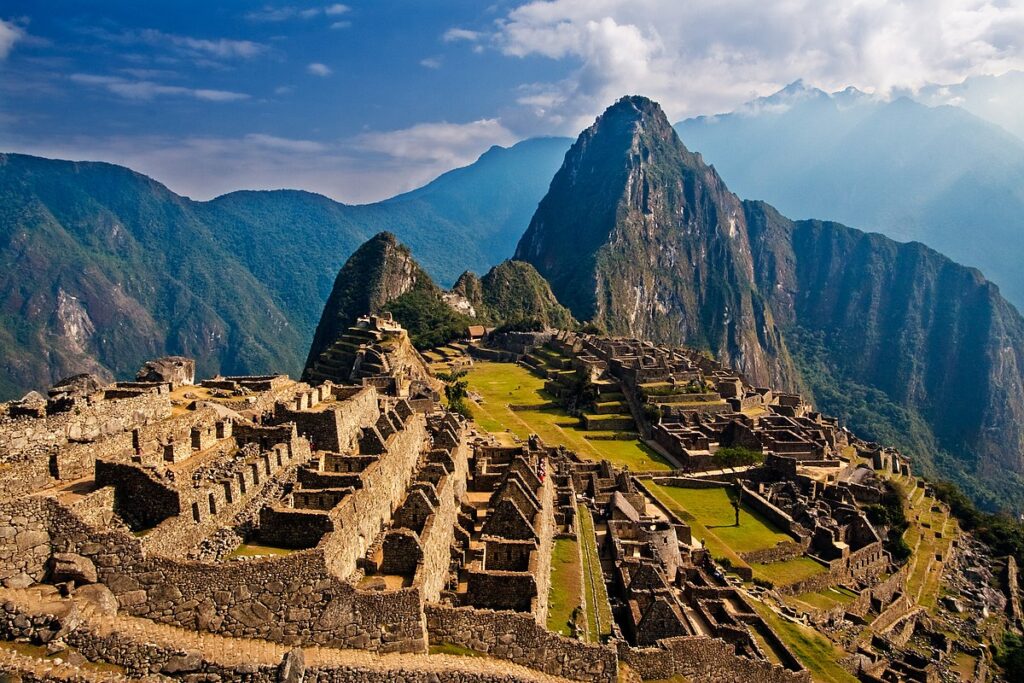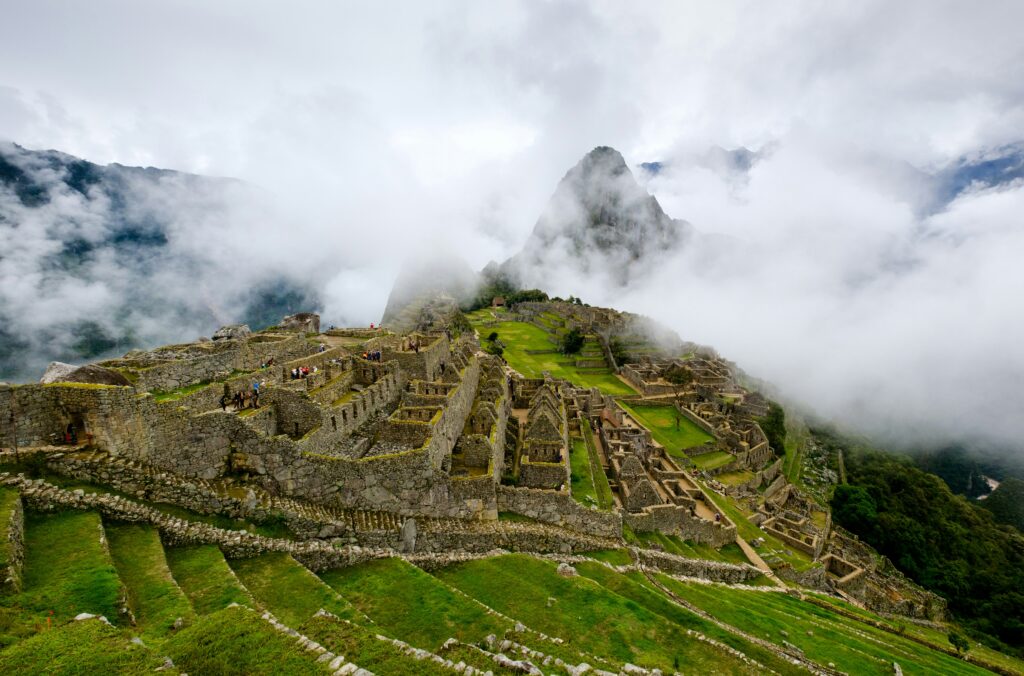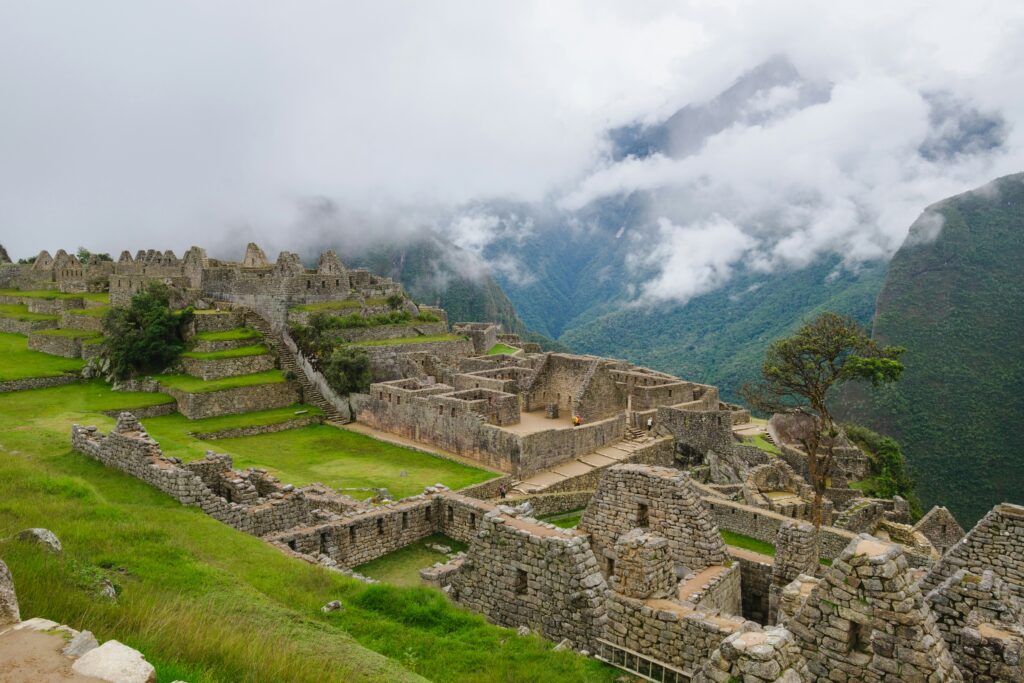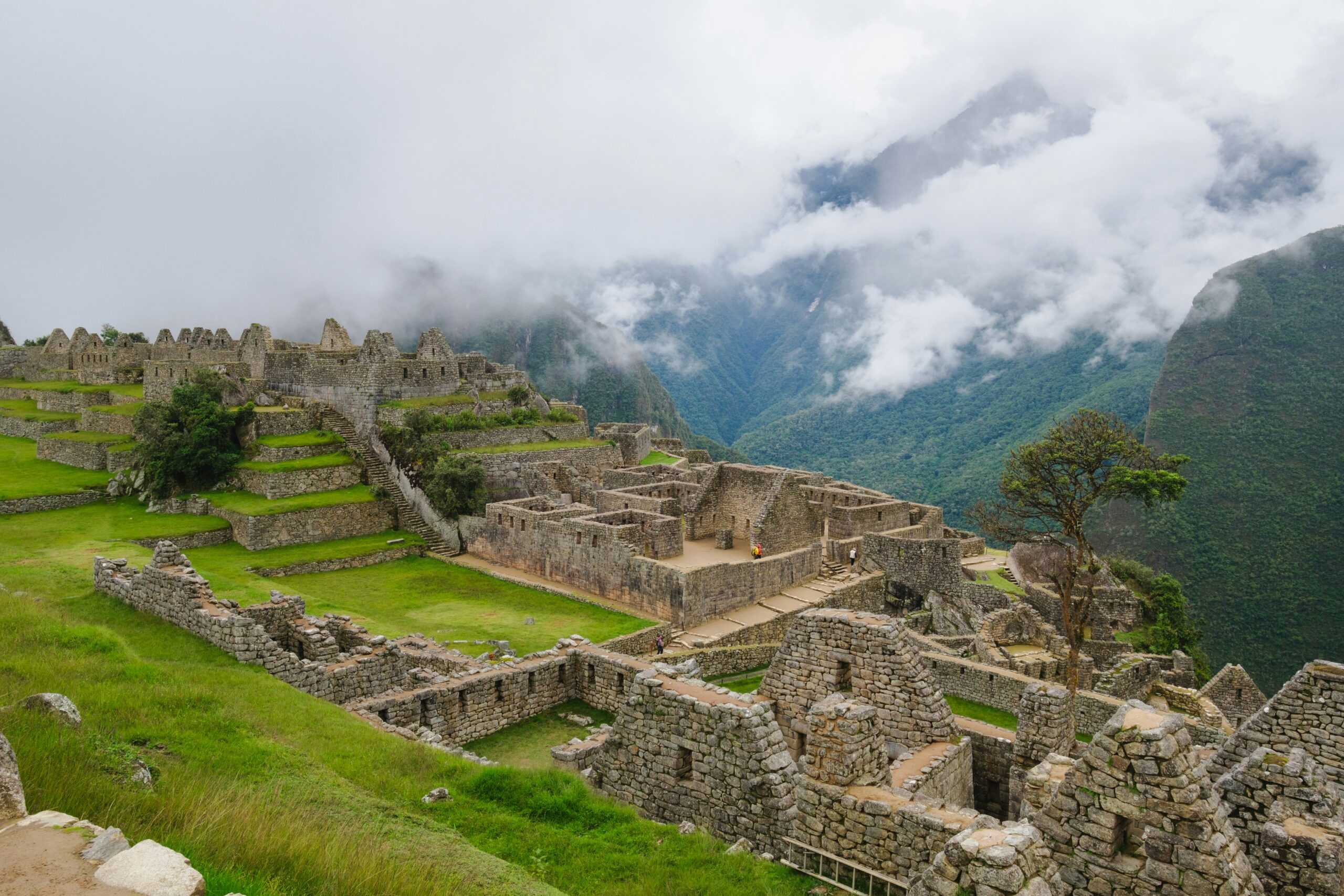Machu Picchu is a 15th-century Incan citadel located high in the Andes Mountains of Peru. Built by the Inca emperor Pachacuti around 1450, it was later abandoned during the Spanish Conquest. The site is renowned for its stunning mountain views and sophisticated dry-stone construction. It includes various structures like temples, terraces, and palaces, all interconnected by a network of stone pathways. Rediscovered by American historian Hiram Bingham in 1911, Machu Picchu is now a UNESCO World Heritage Site and a major tourist attraction, admired for its historical significance and architectural brilliance.
Historical Background
Origins and Construction:
- Era: Machu Picchu was constructed in the mid-15th century, around 1450, during the reign of the Inca emperor Pachacuti Inca Yupanqui, who is credited with expanding the Inca Empire.
- Purpose: The exact purpose of Machu Picchu remains debated, but it is believed to have been a royal estate or a ceremonial site. Some theories suggest it was an agricultural center, a religious retreat, or a royal summer residence.
Location and Discovery:
- Location: Machu Picchu is situated at an altitude of about 2,430 meters (7,970 feet) above sea level, on a ridge between the Huayna Picchu and Machu Picchu mountains, overlooking the Urubamba River valley.
- Rediscovery: Although known to local indigenous people, Machu Picchu was brought to international attention by American historian Hiram Bingham in 1911. His expedition, sponsored by Yale University, led to its global recognition.
Architectural and Cultural Features
Design and Layout:
- Terraces: The site features extensive agricultural terraces that were used for growing crops. These terraces also helped with erosion control and water management.
- Structures: Machu Picchu includes several notable structures:
- Temple of the Sun: A semicircular building with windows aligned to astronomical events.
- Intihuatana (Hitching Post of the Sun): A ritual stone associated with astronomy and ceremonial practices.
- The Inca Trail: The site is connected to a network of trails that were used for pilgrimage and communication throughout the Inca Empire.
Construction Techniques:
- Stone Masonry: The site is renowned for its finely crafted stone masonry, using precisely cut stones fitted together without mortar (a technique known as ashlar). This construction method helped the buildings withstand earthquakes.
- Water Management: Advanced hydraulic engineering is evident in the complex system of aqueducts and fountains that provided water to the site.
Cultural Significance
Religious and Ceremonial Importance:
- Astronomical Alignments: Many of the structures are aligned with celestial events, indicating their use in astronomical and ceremonial functions.
- Sacred Site: Machu Picchu holds significant spiritual value and is considered a sacred site in Inca culture.
Decline and Preservation:
- Abandonment: The site was abandoned in the 16th century during the Spanish Conquest, and its existence was relatively unknown to outsiders until its rediscovery in the early 20th century.
- Preservation Efforts: Since its rediscovery, efforts have been made to preserve and protect the site from environmental damage, tourism impact, and natural erosion. Machu Picchu is a UNESCO World Heritage Site and a major archaeological treasure.
Modern Significance
Tourism and Conservation:
- Tourism: Machu Picchu is one of the most visited tourist destinations in the world, attracting millions of visitors annually. It offers breathtaking views, historical insights, and a glimpse into the Inca civilization.
- Conservation Challenges: Managing tourism while preserving the site’s integrity is a significant challenge. Measures have been implemented to limit visitor numbers, protect the environment, and ensure the site’s long-term sustainability.
Cultural Impact:
- Global Recognition: Machu Picchu is often referred to as one of the New Seven Wonders of the World and remains a symbol of Inca ingenuity and cultural heritage.



below information is related to upper information but in brief way.
Archaeological Insights
Layout and Urban Planning:
- Urban Zones: Machu Picchu is divided into two main areas: the agricultural sector and the urban sector. The urban sector contains residential, ceremonial, and administrative buildings, while the agricultural sector includes terraces and storage facilities.
- Residential Areas: The residential areas include several types of structures, such as:
- Royal Residences: These are larger, more elaborately constructed buildings likely reserved for the elite or visiting dignitaries.
- Commoner Residences: Smaller, simpler structures were used by lower-status individuals.
- Religious and Ceremonial Structures: Significant ceremonial buildings include:
- The Temple of the Three Windows: An important ritual space with three large windows facing the Sacred Plaza.
- The Temple of the Moon: Located on the slopes of Huayna Picchu, this site features a cave with ritual significance.
Architectural Techniques:
- Stone Cutting and Assembly: The Incas used advanced stone-cutting techniques to create precisely shaped stones that fit together perfectly without mortar. This method, known as ashlar masonry, allowed the structures to be earthquake-resistant.
- Inca Road System: Machu Picchu is connected to the broader Inca road system, which facilitated communication and transportation across the vast empire. The Inca Trail, a famous trekking route, leads to Machu Picchu and includes several archaeological sites along the way.
Artifacts and Preservation:
- Artifacts: Numerous artifacts have been uncovered at Machu Picchu, including pottery, tools, and ceremonial objects. These finds provide insight into Inca daily life, technology, and rituals.
- Preservation Efforts: Preservation efforts include structural reinforcement, visitor management, and environmental conservation to protect the site from erosion, tourism impact, and natural wear.
Cultural and Historical Context
Inca Society and Machu Picchu:
- Social Structure: Machu Picchu’s design reflects the hierarchical nature of Inca society. The layout of buildings and the use of space indicate the importance of ceremonial practices and the central role of the ruling elite.
- Cosmology and Religion: The site is deeply intertwined with Inca cosmology. The Intihuatana stone, for example, is believed to have been a ritual center used to connect with the sun god Inti and mark astronomical events.
Impact of Spanish Conquest:
- Abandonment: Machu Picchu was abandoned during the Spanish Conquest in the 16th century, likely due to the disruption of the Inca Empire. Its remote location helped it escape the full impact of Spanish destruction.
- Cultural Survival: Despite the upheaval, aspects of Inca culture persisted through local traditions and oral history, helping preserve knowledge about Machu Picchu.

Modern Challenges
Tourism Management:
- Visitor Numbers: The influx of tourists has raised concerns about the site’s preservation. To manage this, the Peruvian government has implemented measures such as timed entry, limiting the number of daily visitors, and regulating tour operations.
- Environmental Impact: Increased foot traffic can lead to soil erosion and damage to the site. Measures are in place to mitigate these effects, such as designated walking paths and ongoing monitoring of the site’s condition.
Cultural and Scientific Research:
- Ongoing Research: Archaeologists and historians continue to study Machu Picchu to understand its full history and function. Recent research includes examining agricultural practices, exploring less-known structures, and using technology such as ground-penetrating radar to uncover new information.
- Cultural Relevance: For many indigenous peoples in Peru, Machu Picchu is a symbol of their heritage and a source of pride. It plays a role in contemporary cultural identity and national pride.
Conservation Initiatives:
- UNESCO World Heritage Site: As a UNESCO World Heritage Site, Machu Picchu benefits from international support for its conservation. This status helps attract funding and expertise for preservation efforts.
- Sustainable Tourism: Efforts are focused on promoting sustainable tourism practices that balance visitor experience with the need to protect and preserve the site for future generations.


